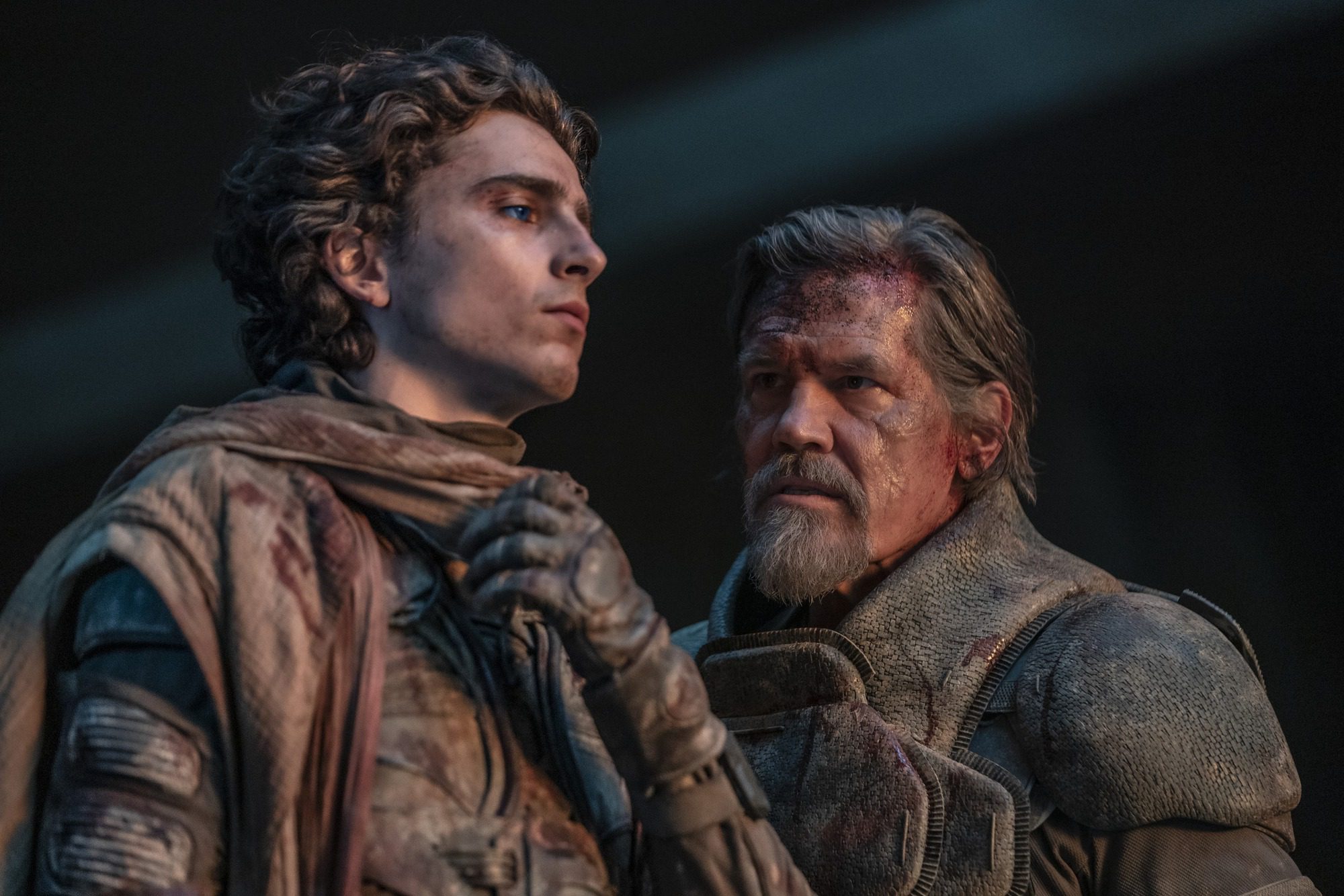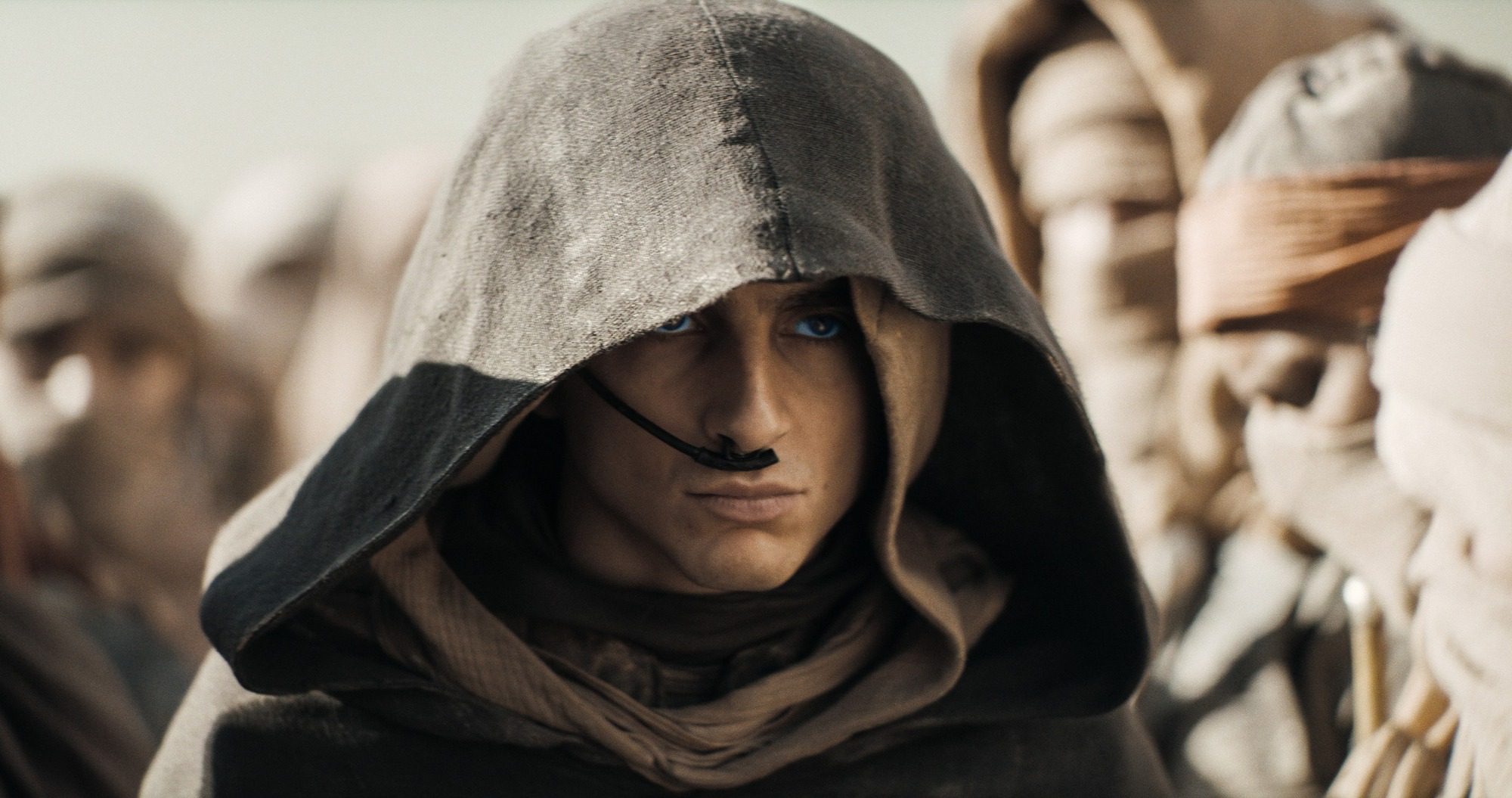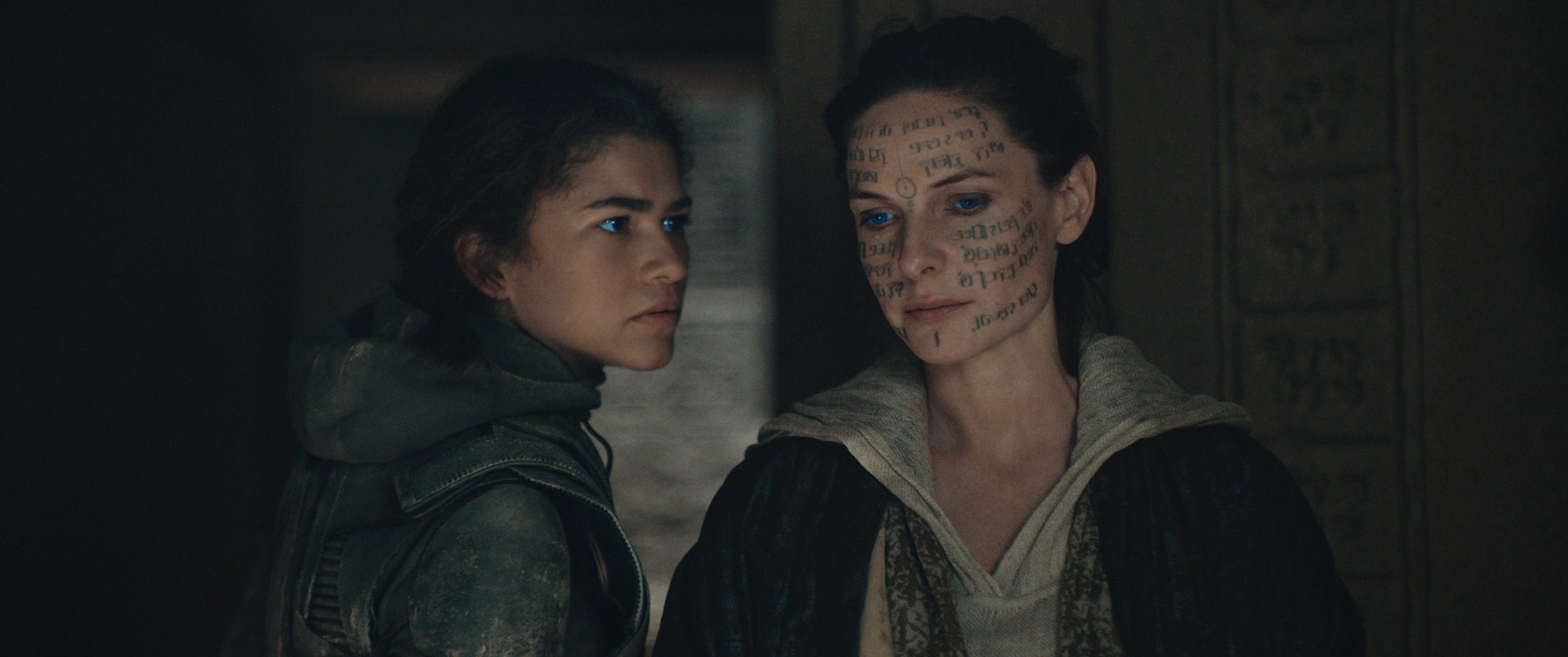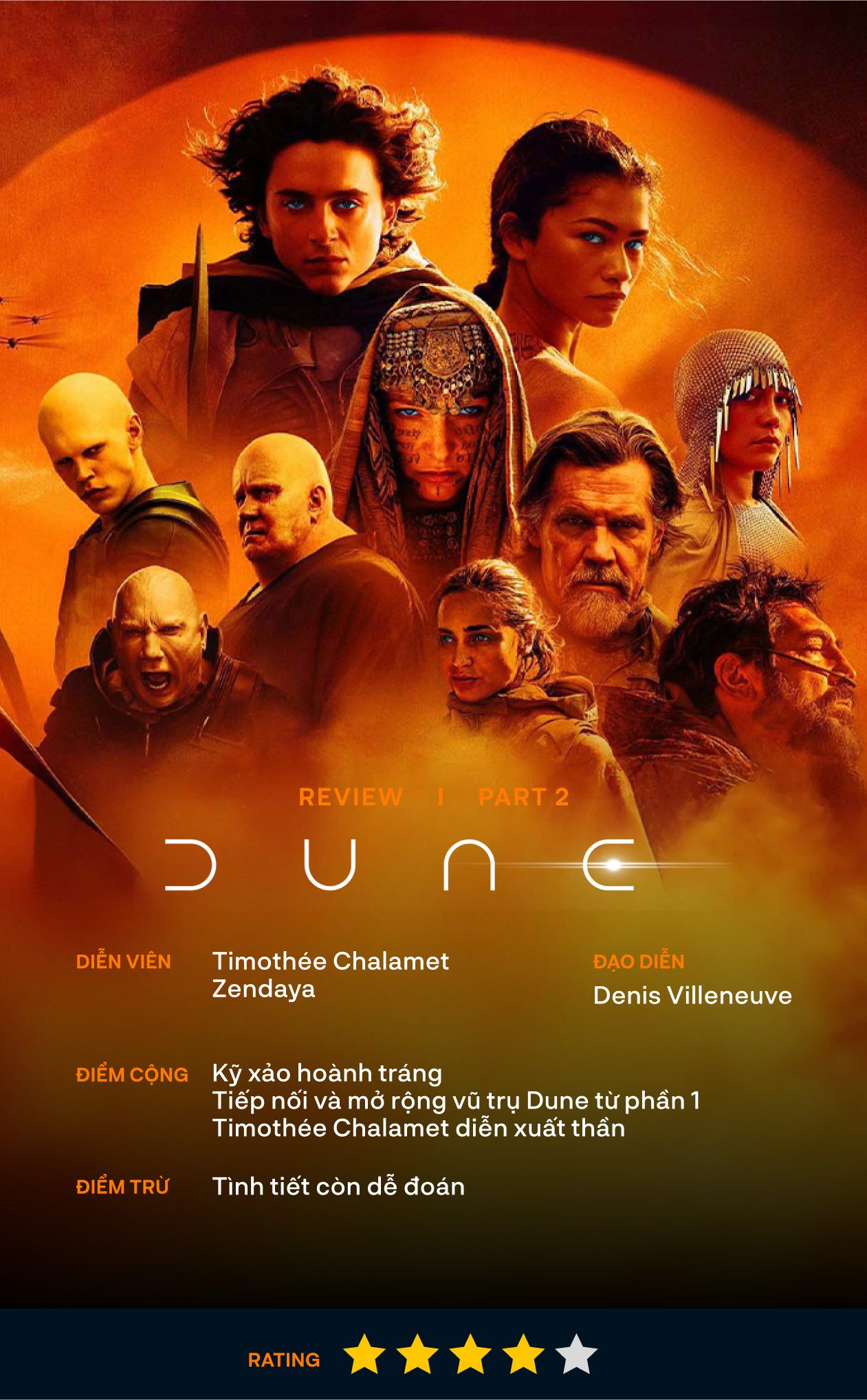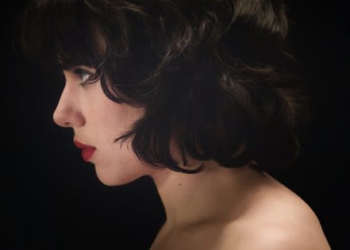Dune is regarded as one of the most outstanding science fiction novels of the 1960s. However, its complex plot and dense themes made its adaptation a challenging task. David Lynch’s Dune (1984) also did not meet expectations. It wasn’t until Denis Villeneuve’s Dune (2021) that audiences experienced the stunning reality of Arrakis. After three years, Dune: Part Two (Dune 2) has arrived, promising to be an elevated cinematic version of the first part.
Dune: Part Two continues with the story as the Atreides family faces annihilation, leaving Paul (Timothée Chalamet) and Lady Jessica (Rebecca Ferguson) to survive among the Fremen. Over time, Paul earns the trust of Stilgar (Javier Bardem) and the members of the Fremen tribe. He and Chani (Zendaya) also develop a romantic relationship. However, Paul always struggles with the path to becoming the prophesied Kwisatz Haderach. He is determined to fulfill his destiny while battling against the Harkonnens, who send their heir Feyd-Rautha (Austin Butler) to reclaim power, shifting the tides of battle in unexpected ways.
An Unforgettable Cinematic Experience
Denis Villeneuve is undoubtedly one of the premier directors shaping the visual landscape of Hollywood in recent years. From Arrival (2016) and Blade Runner 2049 to Dune, the filmmaker, born in 1967, offers a sensory and thought-provoking experience. Dune: Part Two elevates the cinematic narrative to new heights compared to its predecessor.
Utilizing entirely IMAX cameras, the film showcases the breathtaking vastness of the desert planet Arrakis. Compared to the first part, Dune: Part Two features many grand sequences, requiring complex choreography and visual effects that enhance the storytelling, especially during scenes with Paul navigating the Sandworms, depicted with stunning slow-motion and Hans Zimmer’s resonating score.
The film makes extensive use of various angles to capture the overall significance of Villeneuve’s vision. Almost every frame could be considered a standalone piece of art, ensuring impactful storytelling without losing focus. The color palette showcases Villeneuve’s creativity, clearly defining the unique characteristics of each setting. For example, the Harkonnen home planet was filmed using exterior angles, highlighting the stark brutality of the characters’ environment.
The action sequences in Dune: Part Two are also much more intense than in the first part. From small-scale skirmishes to the massive Fremen army’s assault against the Harkonnens and the Emperor’s Sardaukar forces, the scenes are reminiscent of a Lord of the Rings epic, with a scale that is breathtaking.
Themes of Power Struggles and Religious Authority
In Dune, audiences are introduced to a world governed by feuding houses, primarily the Harkonnens and Atreides, a universe filled with intricate politics and the mystical Bene Gesserit sisterhood wielding significant power over others. The film explores the darker aspects of the Bene Gesserit in their schemes to manipulate the entire galaxy, blending genetics among the noble houses to create the Kwisatz Haderach.
On Arrakis, we also see the emergence of the prophesied Lisan al Gaib – the messiah figure for the Fremen. Yet, the weight of this legacy bears heavily on Paul, who has been thrust into this role amid a 10,000-year-long prophecy. Dune: Part Two delves deeper into the shadowy agendas of the Bene Gesserit and highlights the significant influence of religion. Even as Paul gains a faction of Fremen to battle against the Harkonnens, the notion of destiny looms large, creating tension between personal choices and predetermined fate.
Lady Jessica’s manipulation of the Fremen’s psyche and the spiritual leaders’ readiness to support Paul builds tension as his character develops. Throughout Dune, Paul grapples with the weight of his family legacy while facing the imminent threat from the Harkonnens. The narrative effectively highlights the struggles between personal ambition and the responsibilities tied to one’s heritage.
The climax is equally tense, with a showdown between Paul and the Emperor’s forces alongside the Harkonnens, creating a gripping atmosphere. Despite the director’s efforts to add layers to the main character, the stakes feel high, and the Fremen’s “outlander” status is continually emphasized, making the resolution feel somewhat rushed, despite the film’s nearly three-hour runtime.
Outstanding Performances by Timothée Chalamet
Timothée Chalamet has earned the title of Hollywood’s “golden boy” thanks to his striking looks and expressive performances, often portraying deeply conflicted characters. This resonates well with Paul in Dune, as he strives to fulfill his family’s legacy while grappling with the responsibilities and challenges that come with it.
In Dune: Part Two, Paul’s internal struggle intensifies as he sees glimpses of a fractured future. He realizes that if he becomes the Lisan al Gaib for the Fremen, the burdens of leadership will be immense. However, many viewers may question whether Timothée Chalamet adequately conveys the imposing presence of a prophetic figure, especially as he navigates his character’s complex journey.
Ultimately, the 1995-born actor captivates audiences with his transformation into Lisan al Gaib. It’s hard to imagine Paul being anything other than deeply troubled just moments before he steps into the role of a messianic leader. In that moment, it becomes clear that not only the Fremen are moved, but the viewers are left to contemplate: “He is indeed the prophesied leader here!”
Not only Paul experiences significant changes in this film, but Lady Jessica also undergoes a remarkable transformation. For Paul to fulfill his role as Lisan al Gaib, she willingly adopts the role of a mother figure to the Fremen while maintaining her powerful presence in the narrative, paralleling her son’s journey closely. Rebecca Ferguson not only delivers a captivating performance but also embodies the weight of a mother fighting for her child in a world where power dynamics are constantly shifting.
Rebecca Ferguson’s performance stands out alongside her co-stars Zendaya and Florence Pugh. Although Chani’s role is expanded in Dune: Part II and is crucial to Paul’s journey, Zendaya’s performance shines only when given the opportunity. Meanwhile, Florence Pugh’s appearance is brief, not leaving a lasting impression.
In contrast, Austin Butler, though not on screen for long, steals the show with his portrayal of the devious and menacing Feyd-Rautha, ready to kill for pleasure or simply to test the waters. No one knows what this character will do next amid the treacherous and ruthless plot twists.
Rating: 4/5
In conclusion, Dune: Part Two is truly one of the most remarkable cinematic experiences, combining visuals, sound, and high-level craftsmanship in recent years. Only Denis Villeneuve could bring the complex narrative of the Dune novel to the big screen with such a vivid and expansive approach. This could be seen as the “miracle” of cinema, where only a grand experience can capture its essence. After Dune: Part Two, audiences are left eagerly anticipating the continuation of Paul and the Fremen’s journey in this vast universe.



